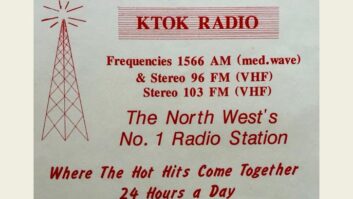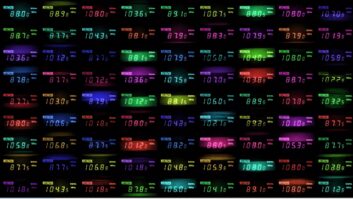LONDON — Four BBC English local radio stations are becoming the BBC’s first “virtual stations,” with the introduction of Virtual Local Radio (ViLoR) technology.
BBC Radio Northampton is already live with the system developed by BBC Technology in collaboration with BBC Local Radio, and three more sites in the east of England will follow in the next nine months. It means a station’s technology can be overhauled in roughly eight weeks, rather than the six to eight months needed previously.


Geoff Woolf leads the BBC’s
ViLoR project. LESS EXPENSIVE
Geoff Woolf, technology development manager for the team leading the ViLoR project, explained that the current approach of traveling to each of the BBC’s 39 local radio stations across England had proved costly and time consuming.
“Even a recent basic upgrade of some hardware involved a number of people spending many months in vans to get round the country to complete that task,” he said. “And the cost, complexity and hassle of doing any refreshes and upgrades meant BBC local radio was always lagging behind the rest of the BBC.”
Woolf explained how the project came about. “Four years ago, I was set the challenge to come up with a new way of delivering technology into BBC local radio that was cheaper, simpler and less time-consuming than the current site-by-site approach, so I put forward the concept of ViLoR — basically the centralization and the virtualization of all the broadcast technology,” he said.
“To test the idea, we set up a laboratory using conventional studio kit, and inserted a number of audio delay lines to make it seem like the audio was going backwards and forwards from the studio to a central area. And to simulate delays in the control interface, we used software that delayed the technology from responding.”
BBC then brought in some presenters to make dummy programs, watched how they interacted with the technology when the delay was increased, and worked out at what point the presenter “broke” in terms of not being able to interact with it, he explained.
Woolf says this research allowed the team to develop the overall design parameters for the project. “We took that to a very limited live pilot in 2012, proving that we could use remote technology live on air. And since then we’ve developed that solution into one that was resilient and scalable, and covered the last few functions and capabilities to the point where BBC Radio Northampton is now live on air with it on a permanent basis.”

The ViLoR Equipment Located in a BBC Radio Northampton Studio

BBC Radio Northampton’s New ‘Virtual Studios’
EASY TRANSITION
Editorial teams retain full control over the playout system and mixing desks, but the actual audio files are stored, streamed, mixed and processed in a remote data center, in real time. Importantly, the system was designed to ensure that only the back-end equipment is centralized, so that editorial and production teams can continue to present from the local community just as they do today.
The BBC also suggests that the new system offers noticeable improvements to sound quality, as audio can lose integrity when converted into different formats throughout the traditional broadcasting process. However, the new virtual system ensures that audio files remain in the same format throughout.
BBC East’s Head of Regional and Local Programming Mick Rawsthorne said the reaction from presenters and producers who use the new equipment has been very positive. “From their point of view, the virtualization has had no impact on their work — and alongside the ViLoR project, they benefit from superior production tools.”

Afternoon presenter John Griff at work in the BBC Radio Northampton studios.
In the future, it’s thought that without the need for expensive and cumbersome gear in the local studio, ViLoR could be developed to make it much easier for editorial teams to cover local events on-the-ground, such as county shows or music festivals.
The BBC also expects to benefit from reductions in property and energy costs, as the physical space, power and cooling required at each station for on-site backroom equipment is significantly reduced to almost zero. In addition, it is possible to easily update the virtual stations with the latest software, which can now be installed simultaneously at the data center.
Woolf reports that there’s been considerable interest in the ViLoR project, both from other parts of the BBC and from broadcasters around the world. But he says that what the team is proudest of remains closer to home — that for the first users in Northampton, the remote, centralized nature of the kit, and the fact that it’s all IP and software-based, appears invisible to them.
Mick Rawsthorne added: “Through Geoff’s genius, and the work of the whole team, we’ve come up with a clever technological solution, that also ensures the local radio teams across the country get the best possible production kit that the BBC can offer.”
The BBC says it will review the performance of these first four stations before taking the decision to roll ViLoR technology out to its other local radio stations.
Will Jackson reports on the industry for Radio World from London.







